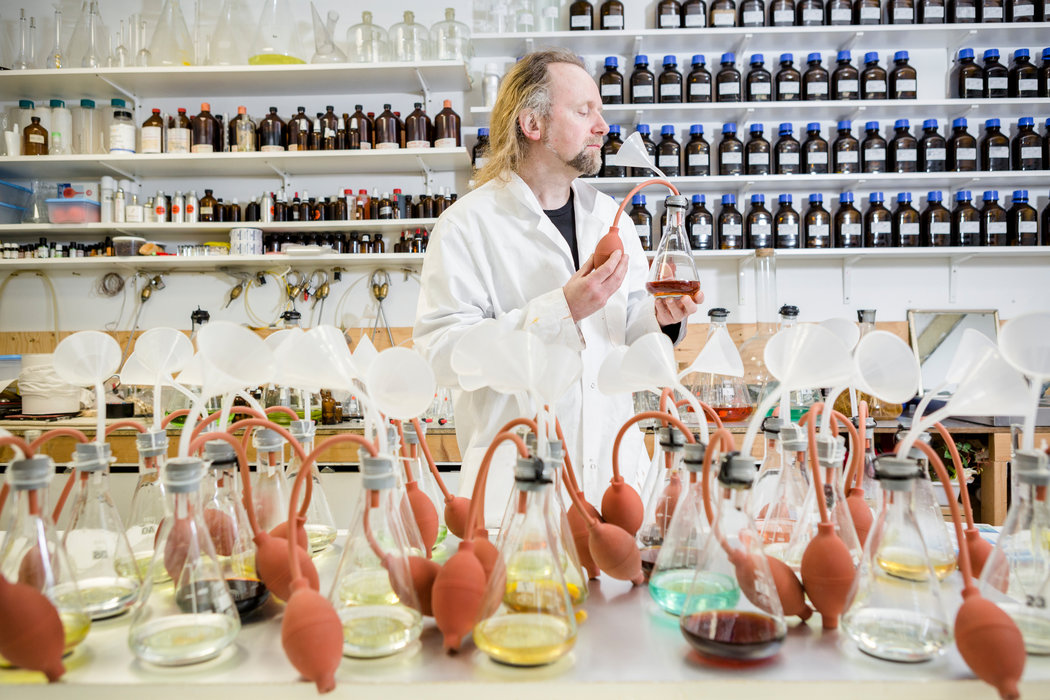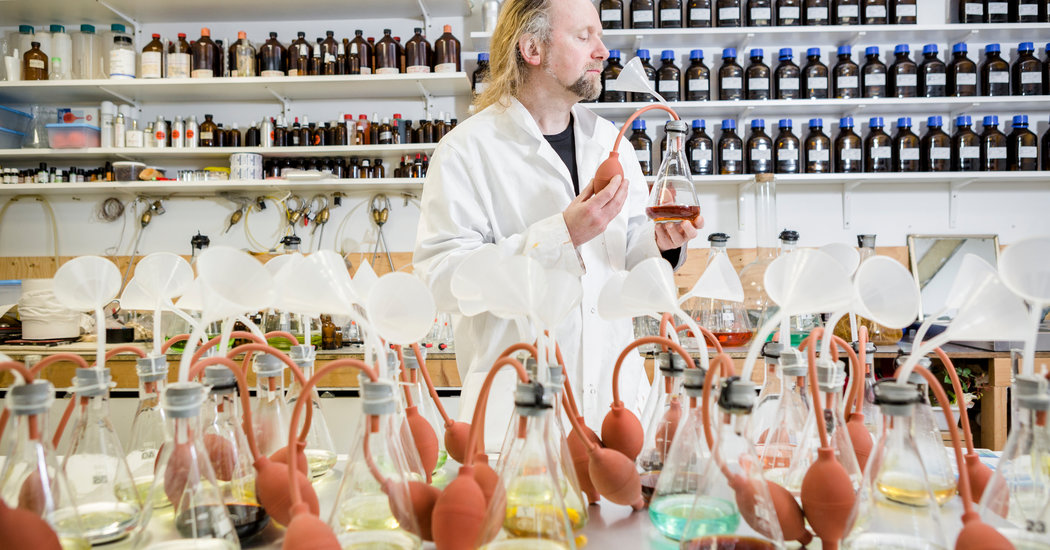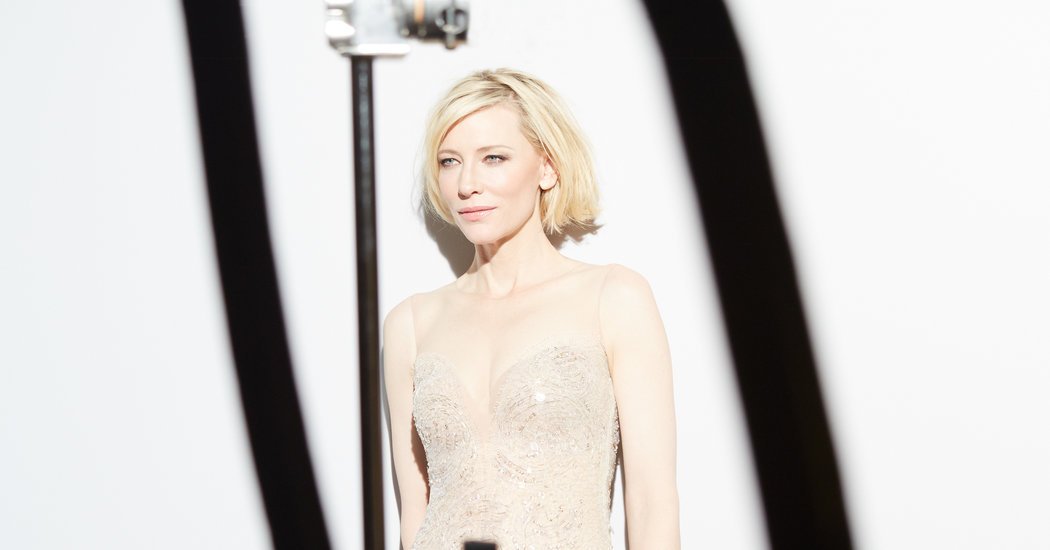
Credit
Frederik Buyckx for The New York Times
Peter De Cupere’s “Tree Virus” sculpture wasn’t much to look at: a dead, black tree rooted in a craggy white ball suspended over a dirt pit, all of it covered by a plastic igloo. Built on a college campus in the Netherlands in 2008, the whole thing might have been leftover scenery from a Tim Burton film if it weren’t for the outrageous smell.
Inside the igloo, a heady mix of peppermint and black pepper saturated the air. It flooded the nose and stung the eyes. Most visitors cried; many ran away. Others seemed to enjoy it, laughing through the tears.
Such is the strange power of olfactory art.
“When you walk into an installation with scent, you cannot hide. Your body starts to react,” said Mr. De Cupere, a Belgian artist who has been using odors to trigger visceral reactions for nearly 20 years. “When you look at something, you start to think about it. I want people to also feel how work can impact you.”
Yes, Mr. De Cupere makes art that stinks. Sewage, sweat, rotten fish, cigarettes, urinal cakes. But also grass, toothpaste, candy, flowers and soap. All have figured prominently in the installations, paintings, perfumes, performances and even an iPad app of this provocateur. He is just one of several contemporary artists using odor to create art that delivers an intensely personal, emotional and sometimes physical experience.
Smell has an unfair advantage over the other senses when it comes to eliciting a response, researchers say. “There is a unique and directly intimate connection between where smell is processed in the brain and where memory is stored,” said Rachel Herz, a psychologist at Brown University and the author of “The Scent of Desire: Discovering Our Enigmatic Sense of Smell.” The olfactory bulb — the bundle of neurons that transmits information from the nose to the brain — is part of the limbic system, which supports emotion, long-term memory and adrenaline flow. “This is where that special characteristic that really distinguishes olfaction comes from.”
<img src="http://www.mrljewelry.net/images/201701/07SCENT-web3-blog427.jpg" alt="" class="media-viewer-candidate" data-mediaviewer-src="https://static01.nyt.com/images/2015/04/07/science/07SCENT-web3/07SCENT-web3-superJumbo.jpg" data-mediaviewer-caption="Peter De Cupere’s “Tree Virus” sculpture. Many visitors start to cry when viewing it.” data-mediaviewer-credit=”Peter De Cupere” itemprop=”url” itemid=”http://www.mrljewelry.net/images/201701/07SCENT-web3-blog427.jpg”/>
Credit
Peter De Cupere
Just as Proust’s madeleines opened a floodgate to childhood memories, scents can recall different feelings depending on how a person first encountered them. “The classic example is wintergreen mint,” considered a very pleasant odor in the United States but unpleasant in Britain, Dr. Herz said. “In the U.K., wintergreen is the scent of bathroom cleaning products or medicine. In the U.S., it’s candy.”
Dr. Herz added that she had always enjoyed the smell of skunk, because before she learned its source, she recognized it as the smell of the woods.
Mr. De Cupere, 44, is well aware of the physiology he exploits. By using smells that are both familiar and out of place — like a cityscape carved out of soap or a gas station with pumps that smell like grass — he not only comments on environment, beauty and climate (three of his favorite topics), but interacts with people’s memories.
“With odor, I can make work that’s universal, that everyone can understand, but still there will be a personal aspect to it,” he said in a telephone interview. “It’s more intimate than seeing, and it’s very subjective. It adds another dimension to the work.”
Art that incorporates scent has always been an outlier, and not without reason. Smells, which start with microscopic chemicals floating through the air, are hard to control and susceptible to environmental conditions. In 1902, a poet and art critic named Sadakichi Hartmann tried using perfume and a fan to stage a “scent concert” in New York, but was foiled by clouds of tobacco smoke and was eventually booed offstage. Smell-o-Vision, a method developed decades later for pumping odors into a movie theater, failed in part because the smells took too long to reach the balcony. Even today, Mr. De Cupere needs galleries showing his work to take it easy on the air conditioning.
Mr. De Cupere discovered the power of scent at a young age. At 9, he distilled grass from his backyard to make a perfume, and saw it brighten the mood of people on the bus. “It’s 7 o’clock in the morning, everyone is tired, but you enter the bus and there’s this smell of fresh-cut grass, and people start to smile,” he said.

Credit
Peter De Cupere
Though there is a definite ick factor to much of his work — last year he distilled his bodily fluids to produce a cologne he calls “Own Smell” — Mr. De Cupere has a playful side. In 1999, he installed 333 bronze clown noses in a children’s cancer clinic in Brussels, then pumped in the scent of Fruittella, a European candy.
Working with Cartamundi, a Belgian card game manufacturer, he recently produced Olfacio, billed as the first smell-recognition app for the iPad, in which a drawing by Mr. De Cupere appears to react when scratch-and-sniff cards are placed on the screen. (In reality, the screen is reading a special ink in the cards.)
More often, he uses smells to provoke. He has made statues of the Virgin Mary out of urinal cakes, holy water and vaginal secretions. And “Warflower,” on display at the Courtauld Institute of Art in London, is a grotesque plant that smells of gunpowder, growing out of a soldier’s helmet.
Mr. De Cupere has a high profile in his home country, and there is evidence his appeal is spreading. He is having his first exhibition in Cuba, and will have others in Switzerland, Italy, the Netherlands and Germany this year.
He’s never exhibited in the United States — a tough market, given Americans’ conventional tastes in both art and odors, said K.J. Baysa, chief strategy officer of the Institute for Art and Olfaction in Los Angeles. Mr. De Cupere’s work “is certainly not what one thinks of when one mentions artworks that involve scent, because we are accustomed to its association with the pleasing notes of perfumes,” Mr. Baysa said. “Art with an edge is not meant to appeal to the masses.”
Mr. De Cupere is more optimistic. “People are not used to it yet,” he said. “They find it crazy. But smell has a lot of possibilities.”
SOURCE:http://www.nytimes.com/2015/04/07/science/art-for-the-knowing-nose.html



